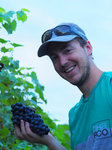
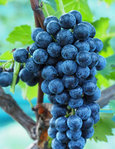
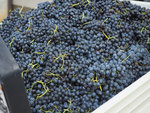
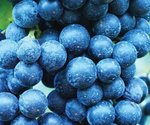
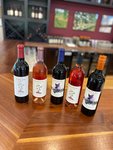
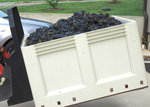

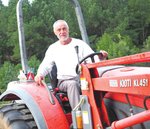

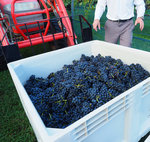

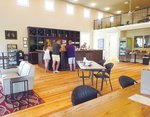
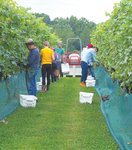
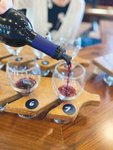

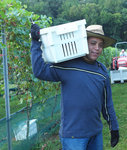
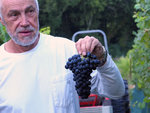
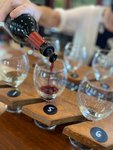

SILER CITY — It’s picking day at FireClay Cellars.
The weather has turned cool, the grapes have ripened sufficiently and Erik Mitran has gathered about a dozen helpers — trusted paid seasonal employees who, now that Mother Nature’s work is done, are suddenly among the most important people in his life — to help out.
The task: harvesting about 5,000 pounds of Chambourcin grapes.
By hand.
And quickly.
The purplish, aromatic grapes live in clusters attached to vines on the grounds of FireClay Cellars, a boutique winery located on an elevated and sloping spit of land off Bowers Store Road east of Siler City on property surrounded by lovely homes and some of the best views in Chatham County. Within the past week or so, Mitran and company have already picked the four-acre vineyard’s Chardonel and Traminette grapes, and two days from now they’ll be at it again — harvesting the Cabernet Sauvignon, Cabernet Franc and Tannat grapes that will be used to make FireClay’s red blend wine.
But today it’s all about Chambourcin, a French-American hybrid grape known for its dark, rich color and the spicy notes it can bring to a wine. Mitran, who specifically chose this picking day based on a variety of factors — weather chief among them — will oversee the picking, de-stemming, crushing and pressing of the grapes, all done in the basement of FireClay’s upscale tasting room.
They’ll start just after 6:30 a.m., working without a break until about 10:30 a.m. Mitran’s father, Andrei, will bring the grapes down below the tasting room as quickly as they’re collected. Keeping the fruit cool and free from insects is critical at this point to preserve the integrity of the process. The pickers will have tossed bad grapes to the ground, and once inside they’ll be given a once-over before shiny, high-tech stainless-steel machines — relatively compact in size, but capable of working at high speed because of the exacting process — do their work. Grapes are de-stemmed and crushed, then pressed in a separate machine to draw out the juice, which is pumped into a large stainless-steel tank where the magic — fermentation, which takes the delicious juice and naturally, with the help of a bit of yeast, turns it into wine — begins.
It’s not easy. It’s painstaking, exacting work involving pH (which relates to acidity) and Brix (which relates to sugars). Terms like “capping,” “pump-overs,” “yeast,” “tannins” and others flow easily from Mitran’s lips, also allowing him to put his engineering degree — earned at N.C. State — and his experience working at wineries around the state to use.
The fermentation itself happens quickly, over a period of about 10 days. But it’s the aging process — as the wine is stored for about two years as the alcohol and sugars give the wine body, flavor, a deep color and more — that makes it what it’s meant to be: drinkable, delicious and, in FireClay’s case, award-winning.
Sometime in 2022, you’ll be able to drive out to FireClay and sample the results: in a bottle of Chambourcin, FireClay’s full-bodied, slightly dry red wine; or in the winery’s Chamourcin rose, or as part of its red blend.
Here’s a look at how it all gets started.